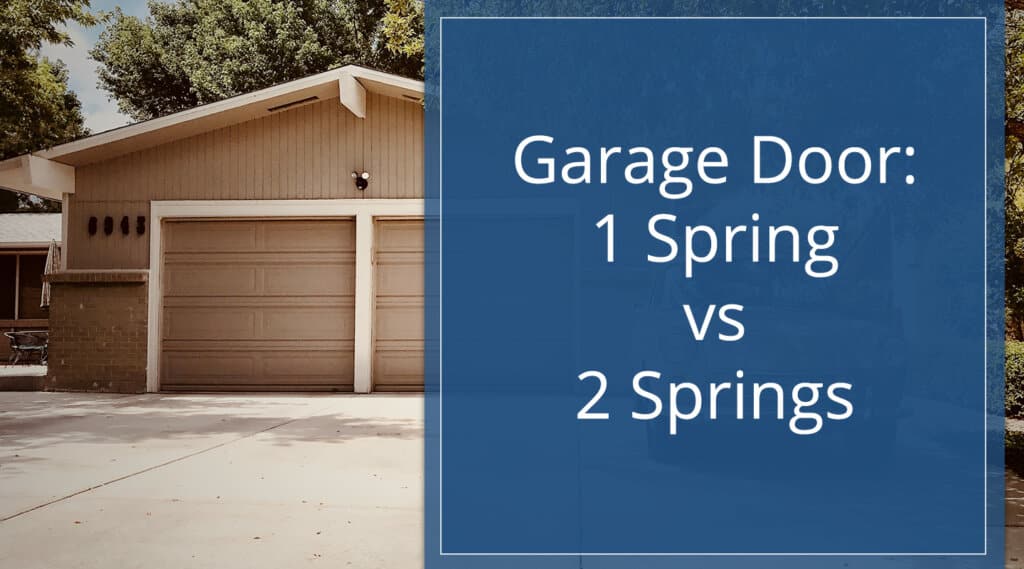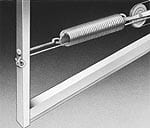
Garage Door: 1 Spring vs 2 Springs

Deciding on 1 spring vs 2 springs is easy when you have a door with extension springs but what if you have torsion springs? Torsion spring systems can use 1 or 2 springs. Read on to learn more about garage door spring systems and find out if you need 1 or 2 springs for your door.
Which Garage Door Springs Do I Have?
Torsion Springs or Extension Springs?
Torsion springs are located above your garage door and run along a metal shaft called a torsion tube. The ends of the spring have metal pieces called cones which are used to make adjustments to the tension of the spring. The cones have four metal ends with holes in them that allow a technician to wind the cone using a winding bar.

Extension springs are run along each side of the garage door. At both ends of the spring are loops that are connected to different components on the garage door. As the door opens and closes the extends and contracts.

Torsion Springs: 1 Spring vs 2 Springs
Garage doors with torsion spring systems can have one or two springs. The number of springs you need will depend on the weight of the door. If you live in a new construction home and are having problems with your door have a professional check out your door. Some builders use only one spring when they install garage doors to save money but it may not be the best option for your particular door system.
Doors with one spring place more pressure on the single spring than doors with two springs. Added pressure and stress on the center bracket or center bearing can cause premature failure. Using the proper amount of springs will relieve stress off other components in the door system, keep the door balanced and functioning properly for many years.
One Torsion Spring
A lightweight single door can usually be supported by one torsion spring.
- Single car door about 8×7 or 8×8 made of aluminum or other lightweight material
[photo]
Two Torsion Springs
A heavyweight single door may need two torsion springs and double-wide doors need two torsion springs.
- Double-wide doors need 2 or more springs
- Extremely heavy doors may require 3 or 4 springs
[photo]
Extension Springs: 1 Spring vs 2 Springs
Doors with extension springs should always have two springs. The pair work together to provide a counterweight to the door.
If one of your garage door springs breaks or is in poor condition, replace both springs. Replacing one spring just means the older spring will have to be replaced in a matter of time. In order for the springs to provide a balanced lift, both must provide equal strength and support. A single spring cannot lift the door and a good spring paired with a bad one can cause snowball into more problems.
One Extension Spring
Never.
Two Extension Springs
Always.
(Equal number of extension springs on each side.)
Extension Springs or Torsion Springs with 2 Springs?
Extension springs may be the most common but most experts prefer torsion springs. Torsion springs have a longer lifespan than extension springs and are safer in breakage situations. Doors with two torsion springs also allow for manual operation in situations where one spring fails. Doors with extension springs, on the other hand, absolutely need both springs to operate safely, manually or otherwise.
Experiencing spring problems? Learn more about spring options, replacement, or conversion check out our article on [Torsion Springs vs Extension Springs.]
Homeowners in the Southern California region are welcome to contact our team at Heritage Garage Door to schedule a consultation with one of our experts.


